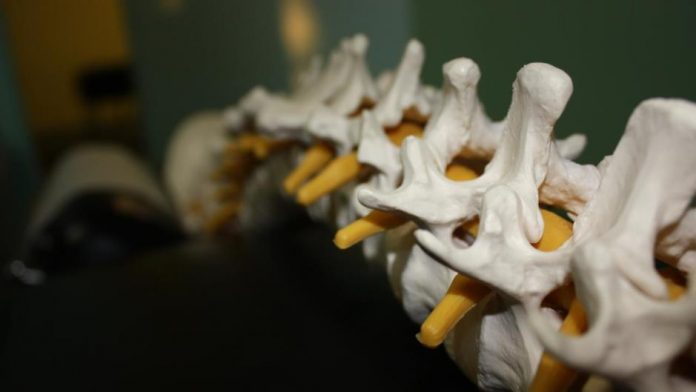The spine is a major structural support in the body, providing the framework upon which we’re built. It’s only fitting that a technique normally used to test the integrity of mechanical structures, such as bridges, could be adapted to diagnose spine conditions. A recent study from the University of Alberta, published in Scientific Reports last week, did just that.
Good vibrations
The technique, a variation of structural health monitoring, works by sending vibrations into the spine and measuring the response that comes back out, like an echo. Structural changes in the spine will alter its vibrational response which doctors could eventually correlate with a specific medical condition.
“Where MRI is a static picture, vibration analysis is a response to a dynamic input,” says Dr. Greg Kawchuk, Professor of Rehabilitation Medicine and Physical Therapy at the University of Alberta and lead author of the study. This means that it could provide more information about how a structure, like the spine, is functioning, rather than just what it looks like at a point in time.
Twice as nice
Kawchuk and his colleague Jan Hartvigsen at the University of Southern Denmark took advantage of Denmark’s twin registry, the largest and most comprehensive in the world, and showed that healthy twins had very similar responses to spine vibration. Conversely, if one twin had a spinal abnormality due to injury, the responses were different. “This study is really a proof of concept that vibration can detect differences in the spine,” says Kawchuk.
Dr. Michael Fehlings, Medical Director of the Krembil Neuroscience Center and Professor of Neurosurgery at the University of Toronto who was not involved in the study, says the concept is interesting but “considerable further validation will be required and it is doubtful that the technique will replace MRI”.
According to the study, an absolute gold-standard to which vibration responses can be compared is lacking and the sensors that record the vibration response are difficult to place in a reproducible manner, even on the same patient. The use of twins in this study also means that variability due to age, sex, weight, etc, was minimized, likely allowing the authors to see smaller differences than would normally be apparent within a variable patient pool.
VibeDx
A TEC Edmonton spin-off company called VibeDx is developing the technology for clinical use. “At first, we believe that the technology will be helpful in triaging people,” says Kawchuk. A study in 2013 showed that more than half of the MRI scans ordered for patients with lower back pain were either inappropriate or of uncertain value. A pre-screening technique such as this could help eliminate those unnecessary scans.
“In the long term, we believe the technology will reveal new diagnoses related to mechanical back pain that are not possible with static imaging.”








































